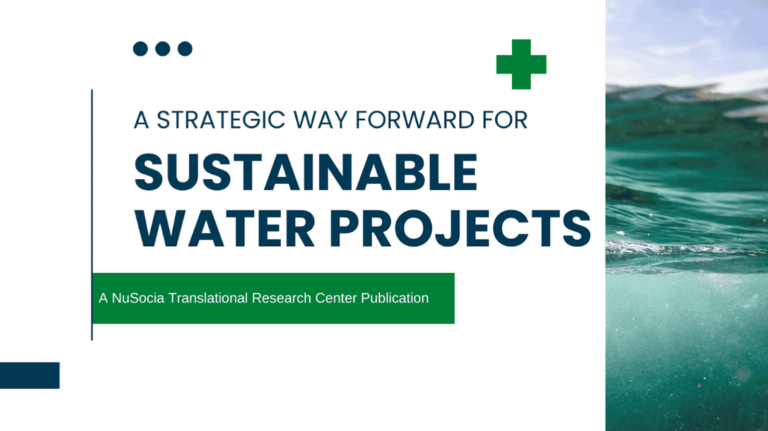As a consultant, I love frameworks. But I am also prudent about them. Too many cooks spoil the broth. Too many frameworks confuse their users until these frameworks speak to each other and establish connections with each other. Frameworks are useful only if they are productive and give better insights.
In recent times, terms like CSR, ESG, and SDGs have gained prominence in our sector, and most of us seem to understand it yet get hazed about how they can be looked at together.
Let’s start with the mega concept of Sustainable Development Goals. The SDGs are like the biggest ever joint objective set before the international community. The purpose is to end poverty, protect the planet, and ensure prosperity for all , by implementing 17 goals and following 169 specific goals until 2030. So, let’s agree, for the time being, that SDGs are an umbrella framework.
So how do we operationalise it and mark our contributions ? If we are Social and Environmental Development Actors(NGOs, CBOs, Corporate Foundations or other civil society organisations) who implement intervention in communities, let’s assume that each of our organisations has at least one thematic focus that broadly aligns with the themes identified under SDGs. Therefore, we need to identify and strategize how our work supports the advancement of these goals. For example, if the organisation is promoting Skilling and Vocation training, then it would primarily contribute to Goal 4 (Goal 4: Ensure inclusive and equitable quality education and promote life-long learning opportunities for all) and specifically to target 4.4 We all understand that social issues are interlinked, complex and context-dependent. By defining a geography for intervention, the organisation would contribute to the achievement of Goal 8.6 and by defining the target group in that region, it would also contribute to Goal 10.2.( See table.1) However, the core theme of Education becomes the starting point for the organisation.
Table 1: Mapping your project focus areas to SDGs- An example
| Focus | Related Goals and Indicators | |
| Over all focus- Education | SDG 4: Education: Ensure inclusive and equitable quality education and promote lifelong learning opportunities for all | |
| Sub Theme- Skilling and Vocation training of youth | 4.4 : number of youth and adults who have relevant skills, including technical and vocational skills, for employment, decent jobs and entrepreneurship | |
| If there is a geographic Focus | 8. Promote sustained, inclusive and sustainable economic growth, full and productive employment and decent work for all | 8.6. Reduce the proportion of youth not in employment, education or training |
| If there is focus on marginalised, vulnerable and people in poverty in a region | 10: Reduced inequality within and among countries | 10.2 Empower and promote the social, economic and political inclusion of all, irrespective of age, sex, disability, race, ethnicity, origin, religion or economic or other status |
Therefore, one of the ways for implementing organisations to report progress of their work is to align their project objectives with the existing Indicators of the UN SDGs or bring it closer to those indicators so that reporting can be done easily and on these parameters. It also helps donor communities (including Government departments, Philanthropic foundations, and development agencies) streamline their program goals and related measurement indicators. In simple words, all actors are aligning their indicators and nomenclature to something which is globally understood. At this stage, it may also be useful to quickly look at the status of those indicators for the country we operate and strategic priorities.
Now lets look at corporate as an actor which performs multiple roles in the ecosystem. Corporations fuel economic growth, generate jobs and spur innovation. In that process, it also works with different stakeholders of which the community becomes a crucial stakeholder. Corporations also act as one of the grant makers for implementing organisations and may also set up a separate non profit entity that delivers projects with needy communities. One of the key motivations for such initiatives are driven by the phenomena of what we understand as Corporate Social Responsibility (CSR). The intent to do CSR may differ between organisations, but it is commonly motivated from the identity of a corporate being a responsible citizen. Among SMEs it is often found to be motivated by the philanthropic beliefs of the founder and management. Across the world and among companies, CSR practices vary ranging from voluntary action to enforced by law or driven by the management and leaders of the company.
In India, companies have been choosing their priorities from among the pre-identified themes suggested by law(Schedule VII of the Companies Act), where these priorities are aligned to what is considered as important development needs of the country. At the same time, certain companies always view CSR as a strategic initiative to respond to the needs of the community and society in which it operates or extract resources to operate. Therefore choices of thematic are only driven by the priorities set by law, but also connected to factors such as business continuity, licence to operate and harmonious coexistence with communities, and giving back to the society. Therefore, we observe that the CSR priorities of companies in India are aligned to many Social development themes and related goals of SDGS such as Goal 1-8, 10 and more recently on Goal 13 on Climate Action. Therefore, similar to other implementing and donor organisations CSR initiatives should also have concrete measurement of progress on the actions taken across these thematic areas. And therefore as mentioned in the section above, the progress indicators should be aligned to the indicators of SDGs as much as possible.
Companies also look inwards to see if CSR actions have contributed to either creating a positive image for the company or have mitigated its risks. Most organisations therefore measure CSR performance through these two lenses. Why is it important? Primarily, corporations or private organisations have a profit focus and are accountable to their shareholders and investors. This is why, even in India, under the CSR rules, the CSR funding pool is allocated from the company’s Net Profit of the previous year and is not considered a business expenditure. There have been exceptions where companies who have not clocked a profit in the previous three years have still earmarked a certain budget for CSR, clearly demonstrating their commitment to the purpose and construct of CSR.
And in that context, the next term of ESG becomes important.
ESG is considered a core management strategy that companies must implement for sustainable management and investment. In most cases, it is a critical business decision, as investors increasingly look at a company’s ESG risks and opportunities before investing. But ESG is not just about meeting the expectations of a company’s stakeholders; it is about the business entity’s sustainability as such. A good ESG plan will reduce risk for the company or generate new business opportunities, thus strengthening its sustainability and positively contributing to generating positive social and environmental impact.
For example, by ensuring adherence to good labour practices across its supply chain, the business reduces supply chain risks for itself. It ensures human rights and a fair work environment, contributing directly to Goals 3, 8 and 10 of the SDGs. The value is captured within and outside the organisation. Similarly, by critically looking at GHG emissions or circularity concepts, the company can invest in products and services with longer utility and life cycles and, thereby, long-term growth and significantly contribute to attaining the country’s emission-related goals.
Therefore, every single action under ESG has the power to influence and contribute to any of the 17 SDGs if implemented well. The interpretation of what is CSR and what is ESG is not universal, therefore need to be understood in the context of each country. They are also both tools corporations use to improve their social responsibility, but the beneficiary, partners, and funding can differ radically. For example, In India, any action that directly takes care of the benefit of direct employees is an ESG focussed activity and cannot be included under CSR. Similarly, any action taken by the company to reduce waste within its premises do not qualify under CSR today. And so are improving governance practices. Whereas in the context of other countries, welfare of employees and labourers are also included in CSR. However, several actions taken by companies under the ambit of Environmental and Social considerations could be seen as overlapping with CSR activities.
Therefore, instead of delineating them into different frameworks, it is imperative to understand that through ESG and CSR, companies are strengthening themselves for the long-term. By aligning business strategies with the SDGs, companies shall contribute to global sustainability and social progress, fostering a more inclusive and prosperous future. This is increasingly evident today with many CSR leaders assuming the wider role of Sustainability Heads of their companies, which shall align efforts across internal and external stakeholders. It is also crucial because the private sector holds a significant role in championing the country’s performance against the various goals such as the SDGs by 2030.
NOTE: The author does not imply that ESG as a concept is limited to for-profit companies. A nonprofit or Social enterprise that works on education should not disregard environmental goals or governance. ESG should be considered a sustainability framework for responsible organisations, irrespective of their legal forms. An NGO or civil society organisation that advances social goals is equally responsible for ensuring that it does not contribute to emissions or waste generation. It also has to ensure fair work practice, promote diversity and ensure a good governance system.




